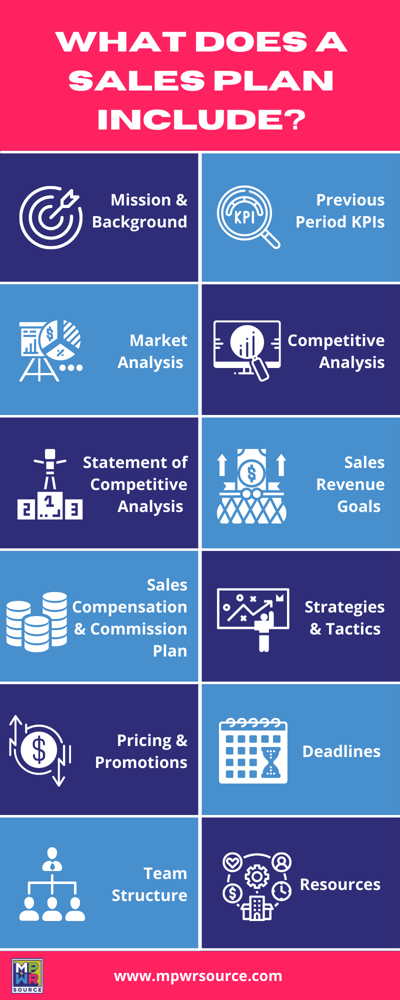Who Needs a Strategic Plan
Every for profit and nonprofit organization, no matter how big or small, needs a strategic plan. A ...

A sales plan is like a business plan in that it serves as a roadmap toward success, except a sales plan specifically maps out the goals of the business and how the sales goals will be achieved. Think of it as a tactical plan derived from an overall sales strategy that has been shaped by your business plan.
A sales plan lays out a company’s plan for improving sales results in a specified amount of time: either annually, biannually, quarterly, or monthly. According to Gartner, “Enterprises will miss the equivalent of up to 10% of annual sales lost opportunities because of poor planning.” Sales plans help sales teams see the big picture or vision of the company, overall objectives, and the plan to reach goals.
When creating a sales plan, it is important to realize that there is no one right way. However, a plan serves as the GPS for your sales team and is an invaluable go-to resource. Without a plan, everything is just talk.
 Before drafting a sales plan, the following research and strategy is required:
Before drafting a sales plan, the following research and strategy is required:The sales plan should include company mission and vision statements, as well as a brief history of the business.
For example, show metrics or KPIs from t he previous year or even last three years, if the sales plan is annual.
he previous year or even last three years, if the sales plan is annual.
Describe who your company aims to serve with its products and service. Include buyer persona(s).
List major competitors and their unique selling propositions, as well as pertinent industry information.
Describe the business’s unique selling position and provide a sample elevator pitch.
List the overall sales goals, outside sales goals, inside sales goals, product/service lines sales goals, client retention goals, and new client goals.
Describe the compensation and commission plan in detail and show examples.
Describe the specific actions your team will need to take to reach revenue targets. Sales activity worksheets can help the sales team to compose individual plans.
Document pricing and promotions in the sales plan.
Make sure to outline any important dates for deliverables and list who is accountable for their completion.
Describe who is on your team and what their role is. For example, it is important to state what the role is of each person on the marketing or inbound team, as well as their metrics or KPIs to the overall company goals.
List and explain the tools used about the industry and the competitive landscape.
With the sales plan drafted and ready to go, arguably the most important step is next. The plan needs to be sold to the sales team, management, and stakeholders. If they don’t buy-in, the plan will not happen. Everyone has to be on board. If the team is excited about the plan and can visualize the win-win, for themselves and the company, the plan will become a reality. Identify the biggest challenges ahead and address them ahead of time before presenting. Put yourselves in the sales teams’, management’s, and stakeholders’ shoes. If there is a win-win for all parties, buy-in will be achieved and the sales plan will reap the rewards.
 I leave you with two quotes:
I leave you with two quotes:“Setting goals is the first step in turning the invisible into the visible.” – Tony Robbins, American author, coach, speaker, and philanthropist
“Sales is an outcome, not a goal. It’s a function of doing numerous things right, starting from the moment you target a potential prospect until you finalize the deal.” - Jill Konrath, sales strategist, speaker and author of the sales books, Selling to Big Companies and SNAP Selling

Every for profit and nonprofit organization, no matter how big or small, needs a strategic plan. A ...

Having abusiness planprepares your organization for success. Without one, attempts to achieve...